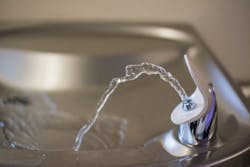SL Environmental Law Group today announced that its client, Ballico-Cressey School District, has filed a lawsuit against Dow Chemical and Shell Oil, sellers of pesticides that contained the chemical 1,2,3 trichloropropane, known as “TCP.” The lawsuit claims that these products have contaminated a well that the District uses to supply drinking water at Cressey School, where special drinking fountains have been installed to remove TCP from the water so it is safe to drink. The District plans on installing a specialized water treatment system to remove TCP from the entire water supply at the school. TCP is a toxic and carcinogenic chemical that the State of California bans in drinking water except at very low levels.
The District filed its lawsuit on March 29, 2022, in the Merced Superior Court, requesting a trial by jury. A trial date has yet to be set. The District is represented by Kenneth A. Sansone and Seth P. Mansergh of SL Environmental Law Group. Through this lawsuit, the District claims that the costs of treating the contaminated well should be borne by Dow and Shell, who profited for decades from selling pesticides contaminated with TCP.
In California alone, more than 70 communities, utilities, and other water providers have filed suit against Dow, Shell, and other corporations that made or sold pesticides contaminated with TCP. In addition to Ballico-Cressey, three other school districts in the Central Valley have filed suit over TCP contamination in the past year alone, including McSwain Unified Elementary School District (in Merced), Selma Unified School District, and Manteca Unified School District.
“The taxpayers of the Ballico-Cressey School District should not be forced to pay to clean up water pollution caused by defective products that made Dow and Shell millions and millions of dollars,” said Bliss Propes, District Superintendent. “This lawsuit will help to hold these corporations accountable for the damage their TCP-contaminated pesticides have caused to one of the community’s most precious resources.”
TCP was present as an impurity in products manufactured by Dow and Shell which consisted of waste product that remained from the manufacture of other chemicals at their plants. Until the 1980s, these products were marketed and sold as pesticides, and were used on crops throughout California to control nematodes, microscopic worms that infest the roots of plants. After the products were used as directed, by injecting them into the soil, the TCP contaminating them moved through the soil and, eventually, into nearby groundwater supplies.
Through its lawsuit, the District claims that, as the manufacturers and sellers of pesticides contaminated with TCP, Dow and Shell, knew or had reason to know of the risks that these products would pollute groundwater, yet failed to take available steps to remove or substantially reduce the concentrations of TCP in the products, or to provide warnings of the risk that using the products as directed could result in groundwater contamination. As a result, the District claims that the defendants are liable for the damages to its water supply under the legal doctrines of strict products liability, nuisance, trespass, and negligence.


